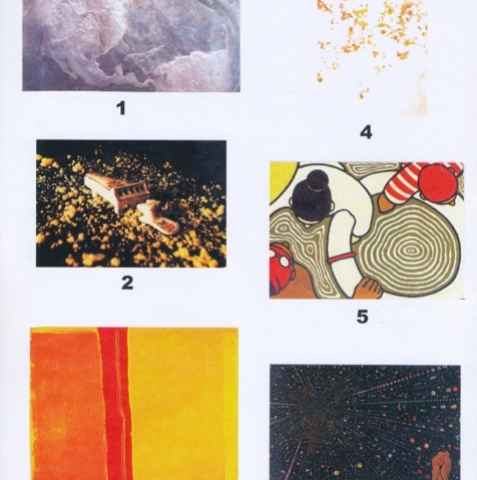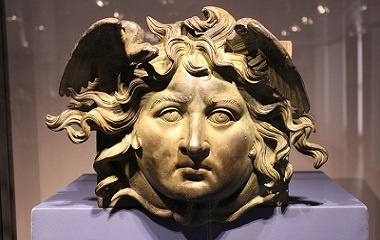FROM THE ARCHIVE: This article originally appeared in Teachers & Writers Magazine on January 14, 2013
Like most people, before I learned to read and write, I taught myself to draw. How easy to pick up a crayon, a magic marker, or a pencil, and make something—anything—on the page (or on the living room wall). As children, we confidently draw what we want to see and what we see, as we see it. Our drawings are not wrong, misspelled or illegible—and if they are illegible, it’s often the kind of illegibility that one reads as poetic, abstract, mysterious, and open to interpretation. Thankfully, we don’t need to speak an artist’s national tongue to read his visual work. Everyone is capable of reading a painting by Rothko or a sculpture by Brancusi, sans translation.
It’s no surprise then that visual images—particularly abstract ones—can lead students to written poetry. When what stands before us is not easily described or defined, we must engage our imaginations and search for our own words to make meaning. In the presence of non-narrative, non-graphic visual images, we are forced to let go of our reliance upon narrative and focus instead on sensitizing ourselves to tone, color, mark, mood, and feeling. Perhaps most importantly, we are left to trust our own readings.
Here is a playful lesson that brings together written and visual poetries:
Genre: Poetry, Art
Grades: 6 – 12
Student needs: general ed, especial ed, visual learners
Common Core Learning Standard: E2: Response to literature
Interpret, analyze, and evaluate narrative, poetry, and drama, aesthetically and philosophically by making connections to: other texts, ideas, cultural perspectives, eras, personal events, and situations.
Workshop Objective: To explore mood and develop connections between visual and written languages.
Do Now: What’s your favorite song? How would you describe its mood?
- Students share. List words on board.
- Distribute three poems: “I’m Nobody—Who Are You?” by Emily Dickinson, “Winter Moon” by Langston Hughes, and “miss rosie” by Lucille Clifton.
- After each reading, ask: “What is the mood of this poem?” “What feeling/s does it bring up?” Add to the list on the board.
- Distribute visual images on a color printout, or display using a projector.
- Activity #1: Pick a visual image that you feel goes with each poem. In your journal write down the name of the poem and the # of the visual image that you picked. Let us know why you paired the poem with that particular image.
- Activity #2: Pick a visual image, but don’t tell anyone which image you picked. Write a poem or a story that evokes the mood of that image. Remember, you’re not trying to EXPLAIN the image—you’re just writing something that relates to the image in terms of mood or tone. Repaint the picture using words.
- Students read their poems out loud and the class tries to guess which image they chose.
Student Poems:
The Sunlight
I see the clouds
are the shape of the moon. The clouds are the shape
of Mexico. They fill the air with gases that spread
far and near. They feel
like wind blowing,
and the clouds are shaped like
blue waves.
The moon is around like the sun.
–Anonymous
Except For You
A love cast away
Endless memories of home passing by
The heart beats slow and soft
Fruitless trees and flowerless fields
The blood pumps through the veins
Cast away, alone, except for you
–Anonymous
Maya Pindyck is a poet, interdisciplinary artist, educator, and scholar. Her most recent poetry collection, Impossible Belonging, won the 2021 Philip Levine Prize for Poetry and is forthcoming from Anhinga Press in 2023. In collaboration with Ruth Vinz, Diana Liu, and Ashlynn Wittchow, she co-authored A Poetry Pedagogy for Teachers: Reorienting Classroom Literacy Practices (Bloomsbury, 2022). Pindyck taught in classrooms throughout New York City for over 10 years and earned her PhD in English Education from Teachers College. Currently, she is assistant professor and director of Writing at Moore College of Art & Design in Philadelphia.




